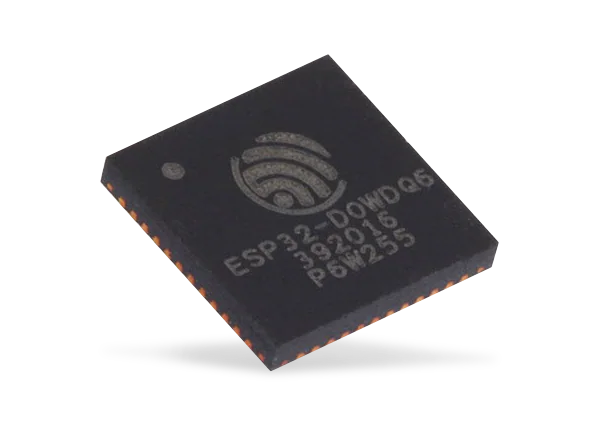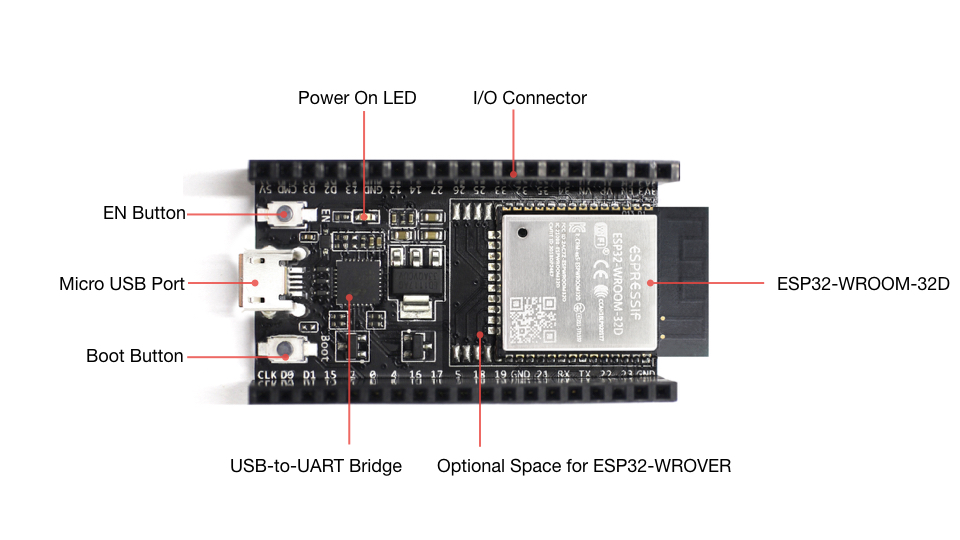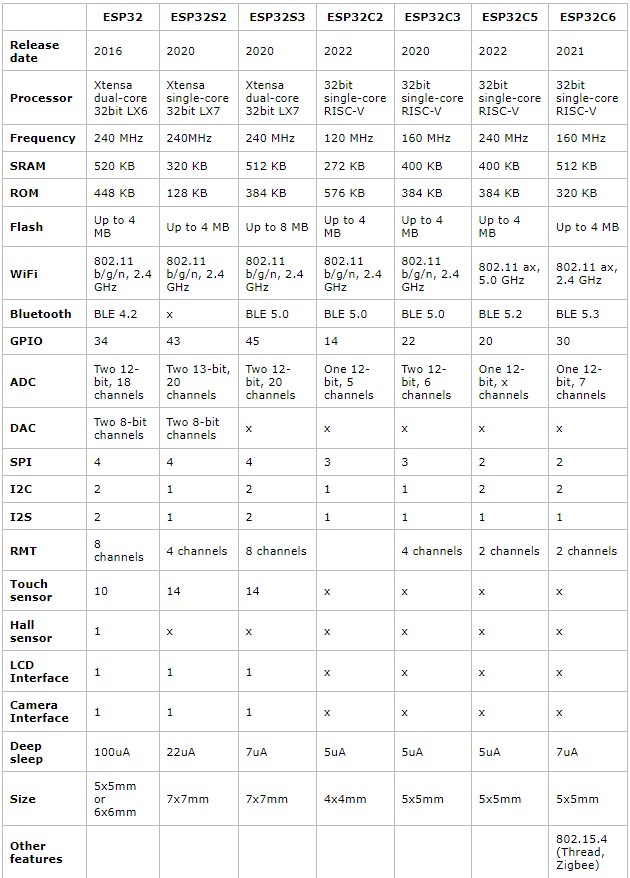ESP32 is a series of low-cost and low-power System-on-a-chip (SoC) microcontrollers developed by Espressif, including Wi-Fi and Bluetooth wireless capabilities and a dual-core processor. Someone is familiar with ESP8266, the ESP32 is its successor. I am not, so I have a lot to learn about it.
Some features of ESP32 (Original):
- Low-cost: I can get an ESP32 from Aliexpress for less than $6 Canadian dollars.
- Low-power: the ESP32 consumes very little power.
- Wi-Fi capabilities: The ESP32 can easily connect to a Wi-Fi network, or create its own Wi-Fi network as an access point.
- Bluetooth: the ESP32 supports Bluetooth Classic and Bluetooth Low Energy (BLE).
- Dual-core: most ESP32 are dual-core, they come with 2 Xtensa 32-bit LX6 microprocessors: core 0 and core 1.
- Rich peripheral input/output interface: the ESP32 supports a wide variety of input (read data from the outside world) and output (to send commands/signals to the outside world) peripherals like capacitive touch, ADCs, DACs, UART, SPI, I@C, PWM, and much more.
- Compatible with the Arduino “programming language”: people familiar with the Arduino board will be happy with it.
- Compatible with MicroPython: you can program the ESP32 with MicroPython firmware, which is a re-implementation of Python 3 targeted for microcontrollers and embedded systems.
ESP32 Specifications
- Wireless connectivity WiFi: 150Mbps data rate with HT40
- Bluetooth: BLE and Bluetooth Classic
- Processor: Tensilica Xtensa Dual-Core 32-bit LX6 microprocessor, running at 160MHz or 240MHz
- Memory: 448KB ROM (for booting and core functions); 520KB SRAM (for data and instructions); Embedded flash up to 4Mib
- Low Power:
ESP32 does not just refer to the bare ESP32 chip. ESP32 is also used to refer to ESP32 development boards.


At the end of 2020, ESP32-S3 was launched.
ESP32 S3 Series
It comes with the Xtensa dual-core 32-bit LX7 processor. Speed 240MHz.
About the processing memory, it is 512KB of SRAM, 384KB ROM and double the size of flash memory of up to 8MB.
The Wi-Fi is 2.4GHz (802.11 b/g/n) with a speed of up to 150Mbps and Bluetooth Low Energy (BLE)5.0.
It is a kind of replacement for the original ESP32.
The same year, ESPRESSIF announced the RISC version of ESP32.
ESP32 C3 Series
It is a RISC-V chip. C3 is a single-core 32-bit RISC-V processor, with a clock speed of 160MHz.
It provides 400KB of SRAM, 384KB ROM, and up to 4MB of flash memory.
Same Wi-Fi and Bluetooth features as ESP32 S3.
In 2021, ESP32-C6 was released.
ESP32 C6 Series
It is also RISC-V, the same as C3.
But, it has Wi-Fi 6, 2.4GHz (802.11ax) with 802.11 b/g/n.
Bluetooth is BLE5.3
It provided better connectivity.
There are also ESP32 S2, ESP32 C2, ESP32 C5 etc. Here is a comparison table for reference.
So, which ESP32 do you choose for your project?
